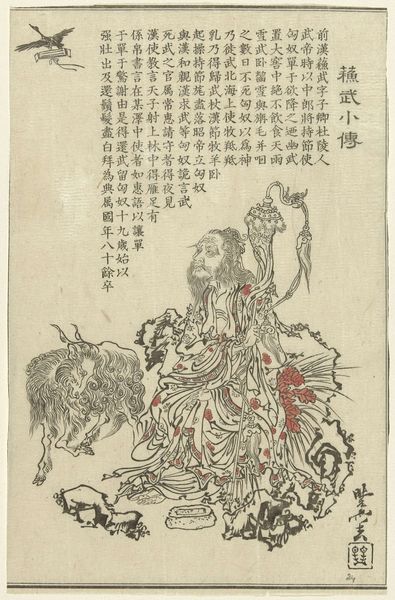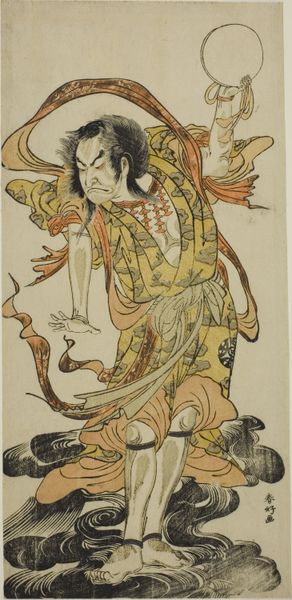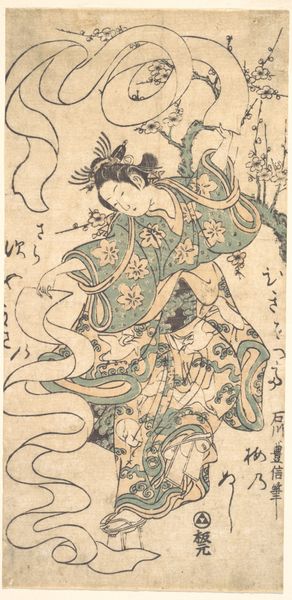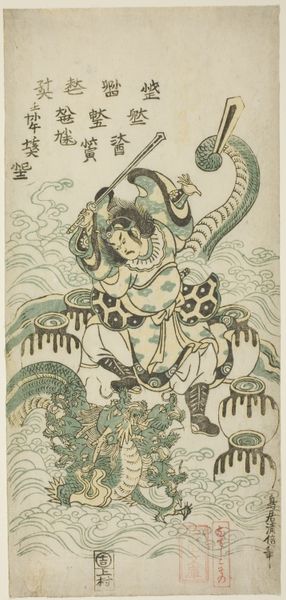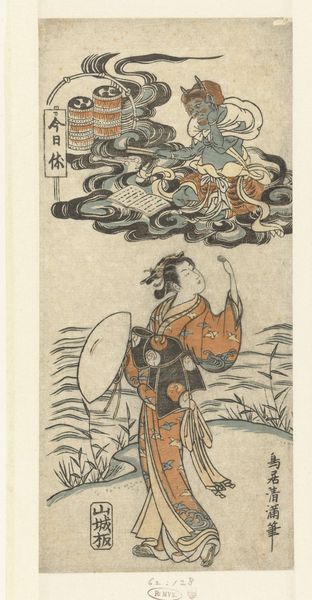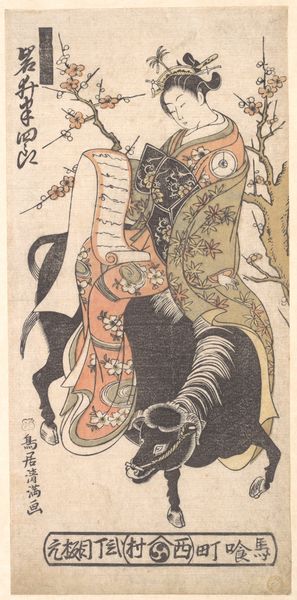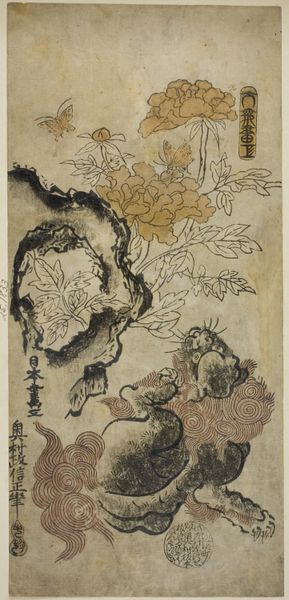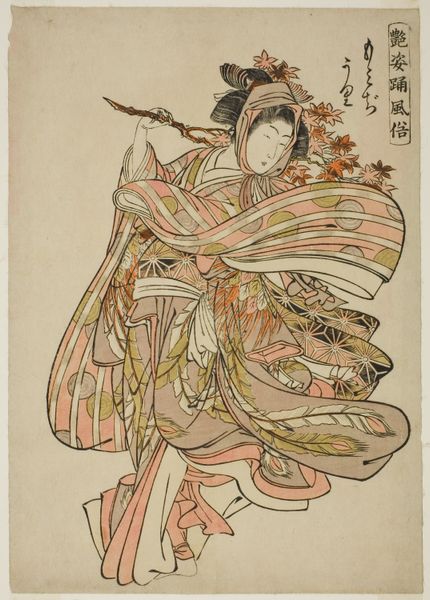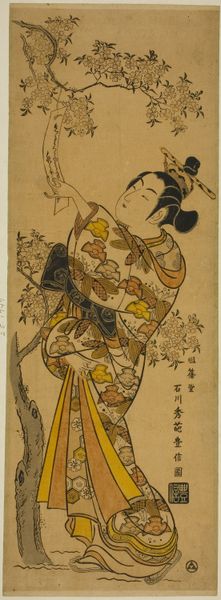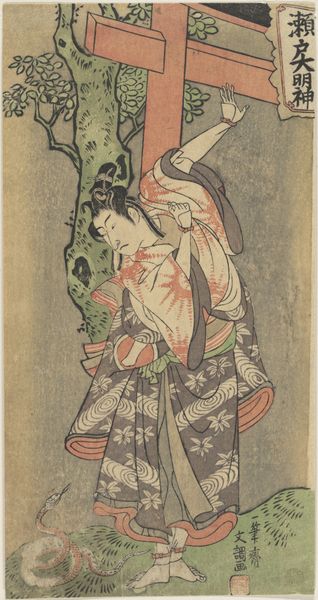
print, woodblock-print
# print
#
asian-art
#
ukiyo-e
#
fantasy-art
#
figuration
#
woodblock-print
Dimensions: height 386 mm, width 254 mm
Copyright: Rijks Museum: Open Domain
Curator: This woodblock print, titled "Shoki, de kwelgeest van demonen," comes to us from Kawanabe Kyōsai, circa 1860. It's currently housed right here in the Rijksmuseum. Editor: He’s quite the imposing figure, isn’t he? The color palette really draws you in – almost like looking at something through rose-tinted glasses, but with this underlying threat. Curator: The print depicts Shoki, a figure from Chinese folklore adopted into Japanese culture. Shoki is traditionally known as a demon queller, often invoked to protect against evil spirits and disease. Think of him as a cultural immune system. Editor: Interesting… Looking at the making of the artwork, you can see the tangible wood grain through the layered printing. I wonder, with this piece's history, what types of wood were used? How did these constraints and material availabilities affect Kyosai’s practice? Curator: The cultural context is crucial here. Kyosai was working in a period of huge social upheaval as Japan opened up to the West, ukiyo-e, like this one, offered both escapism and social commentary. Note the demon he's chasing – is it simply a monstrous figure, or is it symbolic of outside influence and threats to tradition? Editor: Possibly! The printmaking process here itself becomes a conversation on cultural production. Each layer would need meticulous carving into wood, showing real craftsmanship. Considering ukiyo-e’s accessibility, how did the labour costs compare to art for the elite? Was this affordable demon quelling for the masses? Curator: Precisely! The relatively low cost made prints accessible to a broader audience, solidifying the imagery and its values across social strata. It reinforces the notion of collective defense against societal ills, doesn't it? The idea of a publicly consumed symbol. Editor: Looking at his sword and determined stride, you get this sense of righteous force through an intensive physical, crafted thing. It gives an entirely different perspective than high art paintings, you can almost feel the hand of the maker! Curator: Indeed. Reflecting on this, we see how cultural anxieties about purity and protection find a voice through these popular prints. The anxieties become visible. Editor: And in that visibility is a whole material world of ink, paper and labour – an insight into the everyday and the artistic merged into one!
Comments
No comments
Be the first to comment and join the conversation on the ultimate creative platform.
